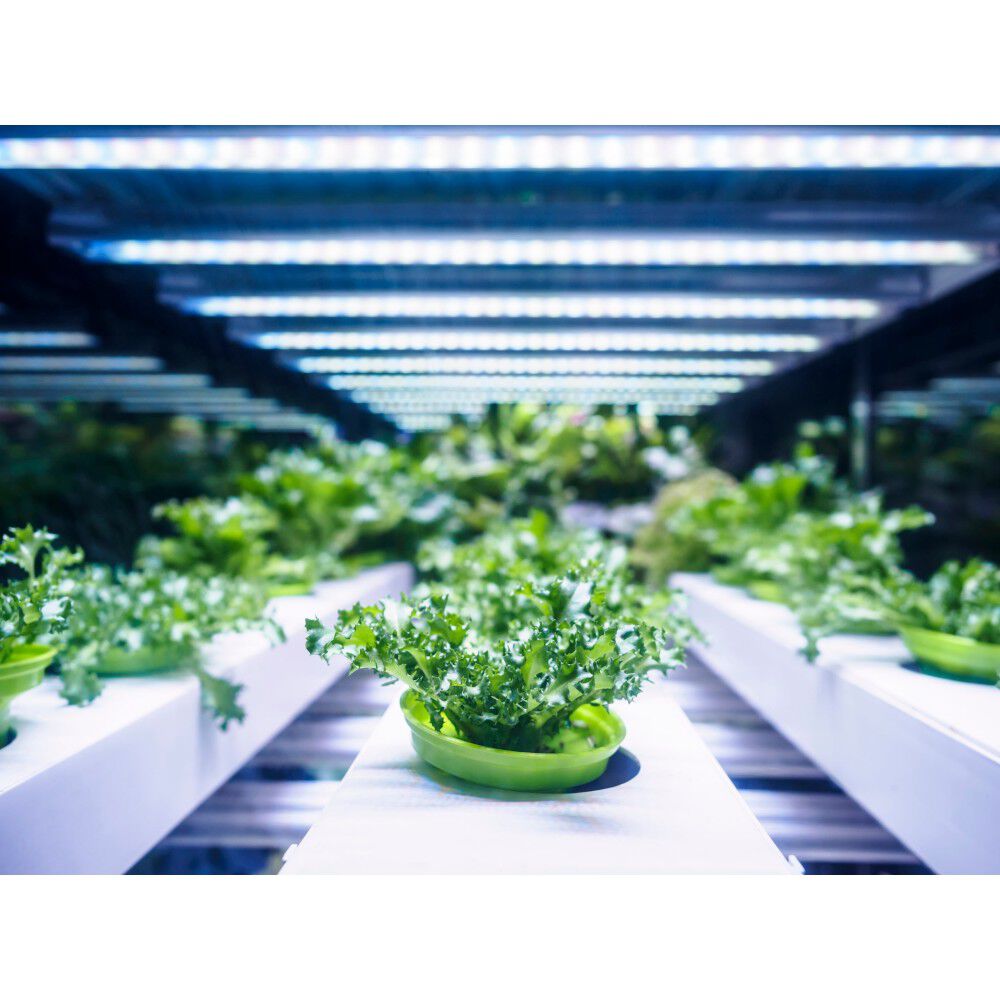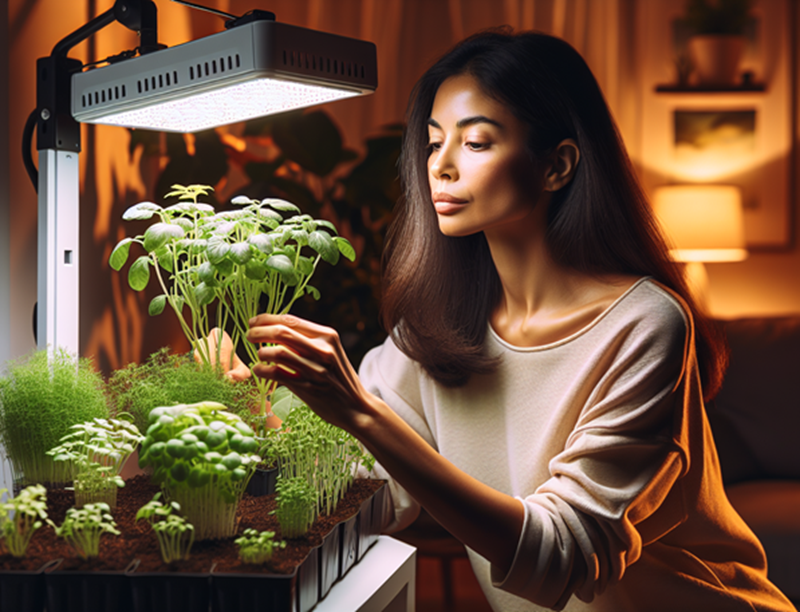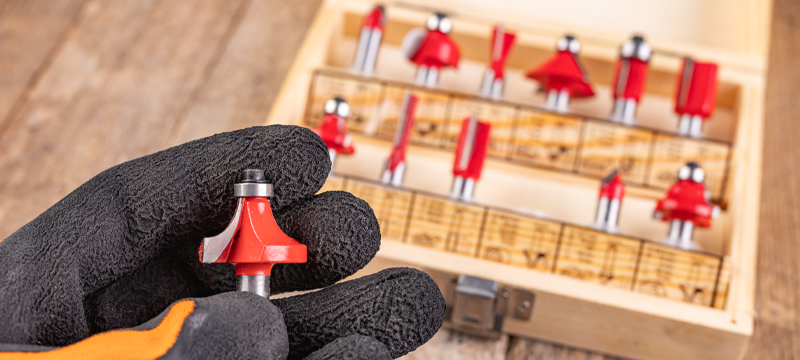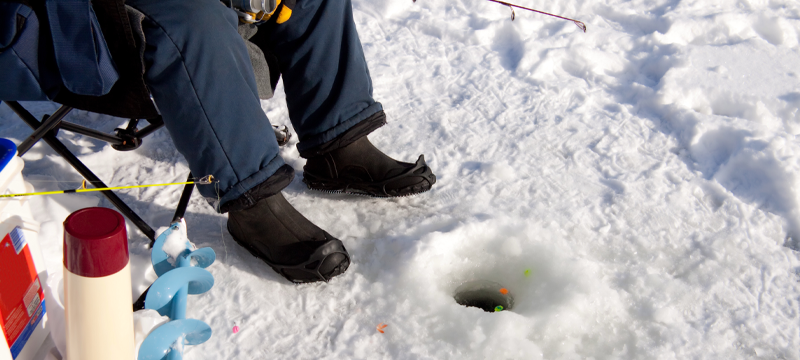Learning how to use grow lights effectively is essential for those wanting to be proficient in indoor gardening. These supplemental light sources allow plant enthusiasts to bring the beauty and benefits of nature into their homes where there’s not enough sunlight to sustain a thriving garden.
- In this guide, you’ll learn how to use grow lights for indoor plants to ensure optimal growth and vitality for your indoor plants.
Choosing the Right Grow Lights
Before diving into how to use a grow light, it’s essential to understand the different types available. The three most common types of grow lights are fluorescent, LED, and high-intensity discharge (HID). Each type has its advantages and considerations.
When selecting grow lights for your indoor plants, consider factors such as the size of your space, the specific light requirements of your plants, and your budget. LEDs are energy-efficient and have a long lifespan, making them popular. Fluorescent lamps are affordable and suitable for smaller indoor gardens. Although more expensive, HID lights provide intense light output that stimulates plant growth.
Setting Up Grow Lights for Indoor Plants
Proper positioning and distance from the plants are crucial for ensuring they have ample exposure to light without burning or damaging them. Most grow lights come with manufacturer instructions regarding the recommended distance, but a general rule of thumb is to position the light 12-18 inches above the plants.
To distribute the light evenly, consider using reflective materials such as aluminum foil or reflective sheets on the walls surrounding your plants. This will help maximize light absorption and promote uniform growth.
Timers are highly recommended, as they allow for consistent light exposure and ensure your plants receive the proper light each day. Aim for 12-16 hours of sunlight daily for most indoor plants, replicating the natural daylight cycle.
Using Grow Lights for Seedlings
Understanding how to use grow lights for seedlings is essential to start your indoor garden from seeds. The lights will provide the necessary energy for proper seedling development, as they require intense light to keep them from becoming weak and leggy.
During the initial stages, keep the grow lights on for 16-18 hours per day to mimic the long daylight hours of spring and encourage strong and healthy growth. As the seedlings mature, gradually reduce the light exposure to 12-14 hours daily.
Adjusting the light intensity is crucial as the seedlings grow. Raise the lights gradually to maintain the recommended distance as the plants develop, ensuring they receive adequate but not excessive light.
How Long to Use Grow Lights for Indoor Plants
The duration of using grow lights for indoor plants depends on the specific species and growth stage. Most indoor plants require 12-16 hours of sunlight daily during active growth.
Vegetative plants, which focus on producing foliage, can thrive with longer light hours. Flowering plants, on the other hand, require a shorter light cycle to signal the blooming phase. Check the specific light requirements for your plants to ensure they receive the optimal amount of light.
Tips for Using Grow Lights Effectively

To ensure the effectiveness of grow lights, here are some additional tips to keep in mind:
Monitor light intensity and temperature: Too little light can affect plant growth. Use a light meter to measure the intensity and adjust the distance accordingly. Also, the temperature around the plants should be monitored to avoid heat stress.
Provide supplemental natural light: While grow lights are essential for indoor gardening, supplementing them with natural light will benefit your plants. Place them near windows or use light-diffusing curtains to expose them to natural daylight when possible.
Troubleshooting Common Grow Light Issues
Light burn or light stress: If you notice burned or yellowing leaves, it may indicate light burn. Increase the distance between the plants and the grow lights to reduce the light intensity.
Preventing plant legginess or stretching: Insufficient light or lights placed too far can result in leggy growth. Lower the grow lights or increase their intensity to encourage compact and sturdy plant growth.
Using grow lights effectively can help provide you with an enriching gardening experience. By selecting the correct type of grow lights and understanding their proper placement and length of exposure for your plants based on their specific needs, you can create a thriving indoor garden year-round. Monitor your plants’ progress regularly and make necessary adjustments to optimize their growth. Happy gardening!





One Comment
Sara P Goodin
January 21, 2024 at 1:37 pmWould love to have the book if available